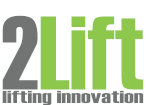Lifters

Flexible and Intelligent Materials Handling Equipment for all Industries
Our lifters are the back bone of our large range of lifting solutions. Our materials handling equipment are designed and manufactured to be strong and reliable and are used in a wide variety of industrial applications. They are the optimum choice for safety, efficiency and reliability.
These key features in the product are achieved through intelligent design, adhering strictly to industry standards and subjecting all lifting machines to vigorous and well documented test procedures before delivery.
Choose which line of lifting aids suits your needs from the list below or read on to learn more about how our lifters are put together.
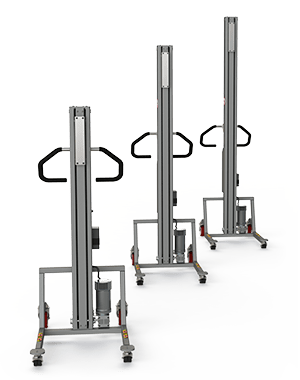
C-Line
C-Line material handling products are lightweight and highly manoeuvrable. C-Line lifters are built in steel and the lifter tools are non-electric. Electric lifters from this line can lift up to 150 kg loads and battery capacity is lower than what is the case on the other lines. These are our most economically priced lifters.
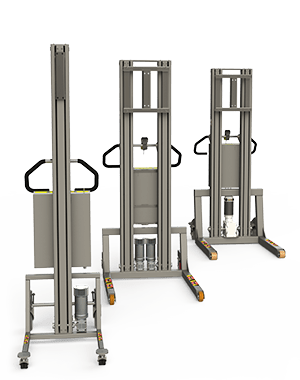
N-Line
The N-Line represents our standard lifters for most environments. These lifters are extremely versatile, and all major components are made of steel, making these lifters strong and durable. Material handling equipment from this line can lift between 150 kg and 500 kg.
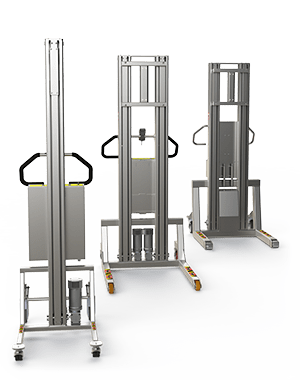
SN-Line
The SN-line features our basic stainless steel lifter. The waterproof grading is IP31, which makes it suitable for surface cleaning with a wet cloth, but not a rinsing down with a hose. Not all components are of stainless steel – this goes for components inside the column and on the wheels. Lifting equipment from this line can lift loads of either 150 kg, 300 kg or 500 kg.
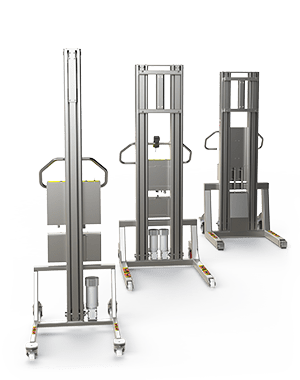
SF-Line
The SF-range of lifters are specifically tailored to the high demands pertaining to the food and beverage industry. These stainless steel lifters are fully waterproof with an of IP65 which means they are built to withstand a good hosing down with water. Components such as lifter column and motor department are not built to keep out particles, which means it not built for cleanroom use. These lifters come in a 150 kg, 300 kg and 500 kg variant.
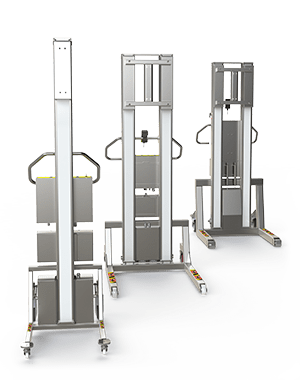
SP-Line
Stainless steel lifters tailored for the pharmaceutical and biotech industry with focus on hygienic design. Rated IP65 and with a total lifting capacity between 150 and 500 kg.
Safety
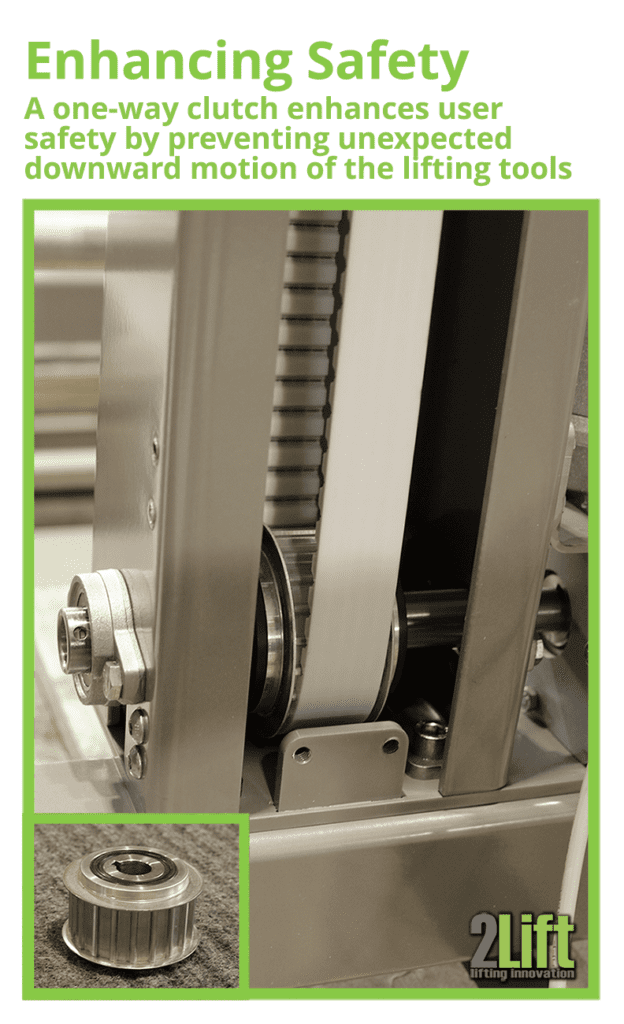
During lifting and handling operations safety should always be the first priority. By using our materials handling equipment you reduce the risk of back injury as well as other forms of injury sustained from manual lifting.
To ensure operator safety in regard to using the lifter we of course adhere to all applicable industry standards and regulations.
We conduct thorough risk evaluations and address the “what if”-scenarios that may lead to safety issues.
We implement technical features such as safety clutches, overload protection, hold-to-run controls and emergency stops when applicable.
Finally, our factory testing procedures eliminate safety issues that might arise from assembly- or component errors.
In many lifting and handling operations safety also applies to the load in addition to the operator. Some of our customers use our industrial materials handling equipment for loads with values exceeding 100.000 €. In general, dropping or damaging a load due to failure of handling equipment is not acceptable to us and this is of course reflected in our product.
Reliability
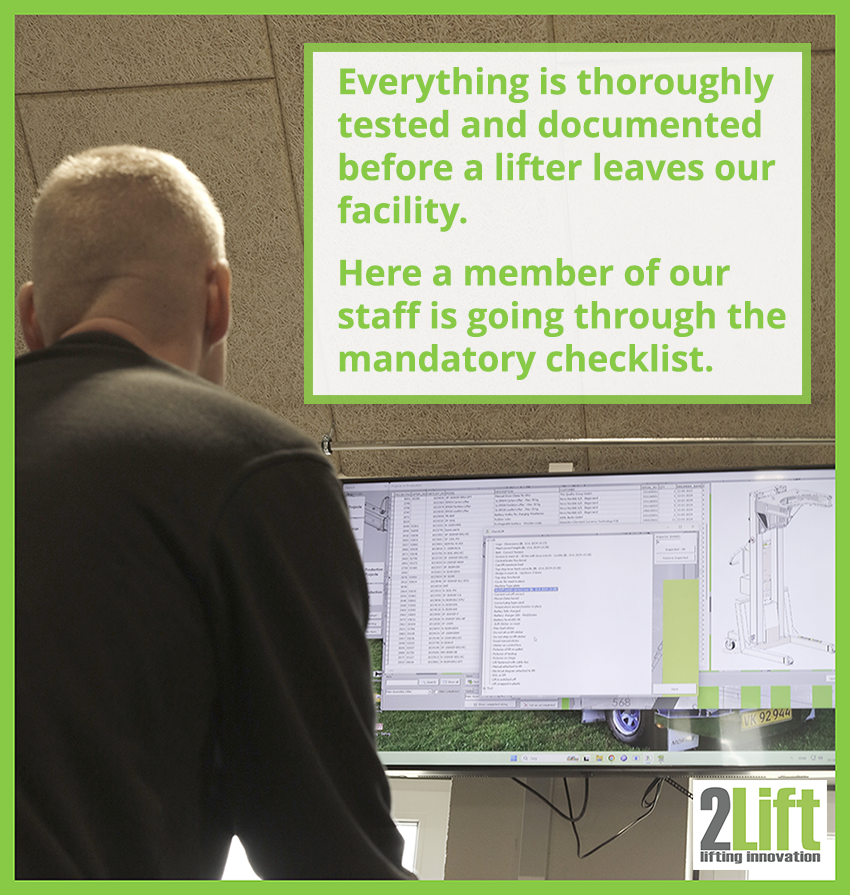
Our customers rely on our lifters. For instance, lifters supply machines and personnel with the materials needed during production. As such the lifting devices become an essential part of the chain of production, making reliability a key issue. We live up to these expectations by implementing the following in all our products.
- We use only the highest quality components in our lifters. Quality is always the first priority in component selection with no compromises allowed.
- The lifters are dimensioned for a 20 year life expectancy assuming normal use (excluding wear and tear elements such as wheels and batteries).
- During design, calculations are made to ensure that all safety factors for strength exceed industry standards by a comfortable margin. Apart from the added user safety, this also ensures an added degree of reliability.
- We test everything rigorously before it leaves our facility. We document all tests with photos, video and check lists.
Ergonomics

Lifting equipment defies its purpose if the user risks injury or MSDs (Musclouskeletal Disorders) by using it. As such, we make in depth analyses of how users interact with our lifters and make sure our design process takes all ergonomic issues into consideration.
Our lifting solutions deliver a large number of electrically powered functions, which reduce the need for repetitive manual cranking or pedal/pump motions.
Control of the powered functions is done with a custom designed remote control with large buttons, which are easy to press even with gloves on. The remote allows for an optimal position for the user during lifting and manipulating operations.
All handles are placed and designed based on ergonomic principles to avoid incorrect motion and unnecessary strain.
The necessary force to manoeuvre the lifter is considered and wheels and castors are carefully selected in accordance (based on the load placement and the surface, which they will be used on).
Custom Solutions
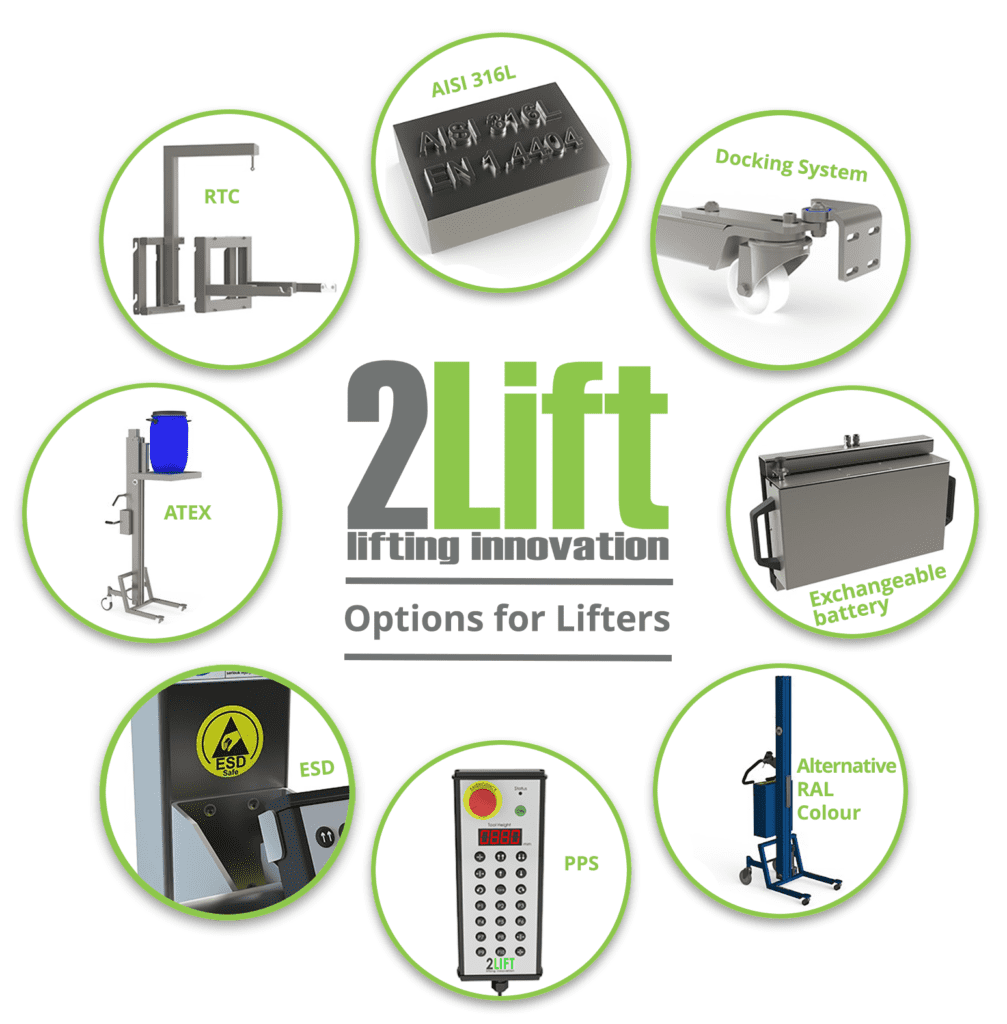
The parameters for lifting and handling operations vary widely. Loads vary in geometry and weight, the direction and type of manipulation varies depending on the task at hand and access is often restricted by doors, ceilings, machine parts and other obstructions.
When we designed our materials handling equipment we knew that in many circumstances a standard solution would not do. So, we adopted a modular approach allowing for easy customisation of all major dimension of our lifters.
Apart from custom dimensions we also deliver a wide variety of other options including stainless variates (AISI 304 and AISI 316L), waterproofing (IP65), ATEX, alternative RAL colour, exchangeable batteries, programmable position stop (PPS), docking system, rapid tool change adaptor (RTC) and electrostatic discharge (ESD).
With any custom solution, communication during the design phase is critical. We have many years experience with this and have a standardised procedure to ensure the best possible result. See more on this and our custom solutions in general here.
Reliability and Maintenance
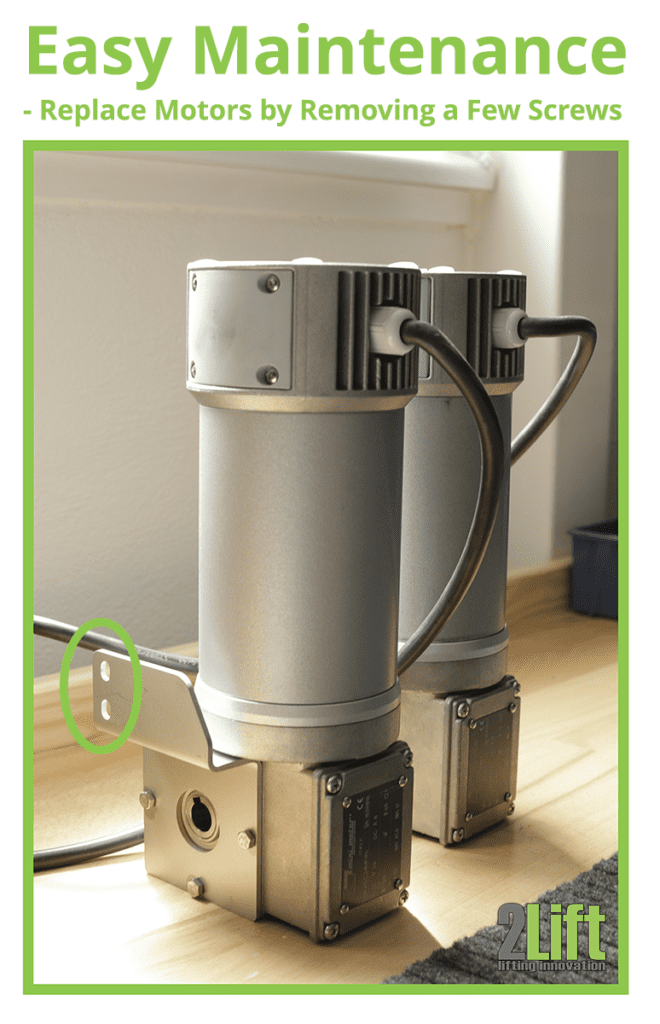
Our modular design approach allows for easy customisation of our lifters, but also has the added benefit of allowing easy maintenance.
For instance, removing and replacing a lifting column is achieved by only loosening a few screws.
The same goes for the entire control unit. Unscrew two screws and in many cases the complete motor and gear unit can be replaced.
We know that our customers rely on our lifters and as such easy maintenance and reliability are critical.
Lifter Components
When we designed our lifters, we carefully tried and tested a large variety concepts and components to ensure that we built the optimal lifter.
Below is short description of each of the major components and what made us choose them. If you have any questions regarding our lifters, please don’t hesitate to contact us here.
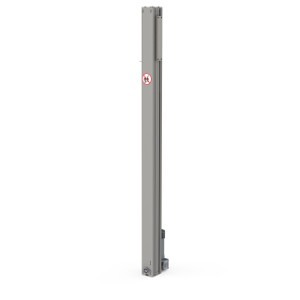
Lifting Column
The lifting column is the main mechanical feature in any lifter and hence of critical importance.
In the design we use, the major components are: C-profile, carriage, cambelt and gearwheel. The C-profile of the lifting column is made in one piece by laser cutting and bending using CNC-technology. This ensures strength and precision.
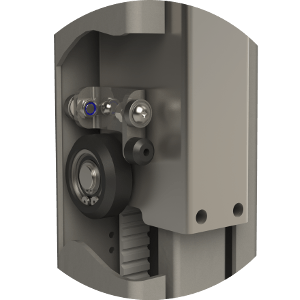
Carriage
Designed around a tube geometry, this carriage is designed for strength and reliability. The use of large bearings with POM-wheels ensures smooth and quiet operation.
And unlike most competitors we also use bearings on the side of the carriage to make sure that off-centre loads do not interfere with lifting.
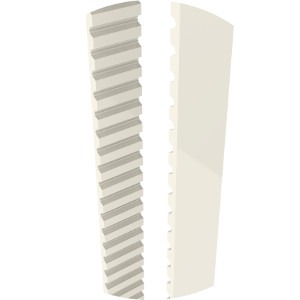
Cambelt
Power is transferred to the sledge via a cambelt. The use of a cam belt ensures smooth motion and maintenance free operation.
The cambelt consist of a matrix of numerous steel wires encased in a polyurethane body. Unlike a chain, where a single bad plate or pin can be catastrophic, failure of a single wire will not cause breakage.
This, along with a safety factor of 10, ensures that we have never experienced belt failure.
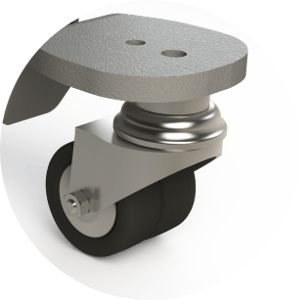
Wheels
The choice of wheels and casters on a lifter is obviously critical with regard to mobility; in addition the choice of braking system has an impact on security. We have literally tested hundreds of different kinds of wheels to ensure that we give our customers the best options.
Depending on the surface on which the lifter will be used and the type of application, we advise our customers as to which choice in wheels is best.
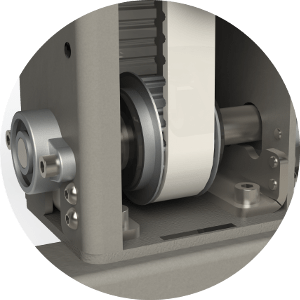
Gear Wheel with One-way Clutch
At the lower end of the lifting column, a gear wheel, powered by a motor, drives the cam belt.
A one-way clutch ensures that the lifter cannot force the lifting tool down. This prevents tipping and crushing and also provides an easy way of placing loads on surfaces in one smooth motion.
To ensure long life and safety, we use only the best German-made one-way clutches available.
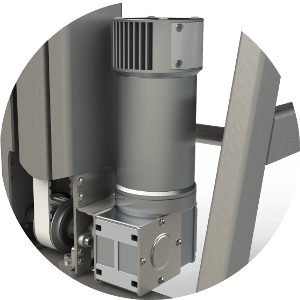
Motor
To power our lifters, we use high quality 24V DC permanent magnet motors, built in the EU.
Fitted on self-locking worm gears with all metal parts, these are safe and reliable, unlike cheap alternatives with nylon gears.
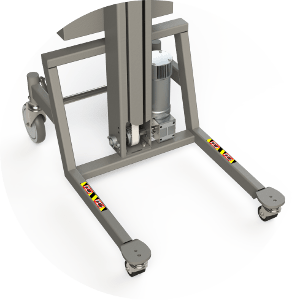
Wheel Base
The wheel base, or legs of the lifter, is the platform on which the lifting column is attached. This frame needs to be rigid and precise to ensure safety and good handling.
Most people have experienced a damaged shopping trolley where one wheel vibrates and rattles due to the cart being bent. To avoid this kind of behaviour, the legs on our lifters are comprised entirely of steel and all joins fully welded. There are no weak aluminium or plastic parts and no screw connections that may become loose.

Control unit and batteries
We have developed a custom made solid-state control unit for our 24V DC system that powers all our lifters. Where some systems use relays to control the large currents needed to drive the motor, our solution has no moving parts. This dramatically lowers the failure rate, resulting in a stable and reliable system.
Our standard, powerful battery packs have a capacity of 9, 18 or 45 Ah. This ensures, that for most applications, the lifter only needs to be charged once for every eight-hour shift.
Go to our Products page to find out how our products may help you in your line of industry and your work situation.
Go to our Homepage.
